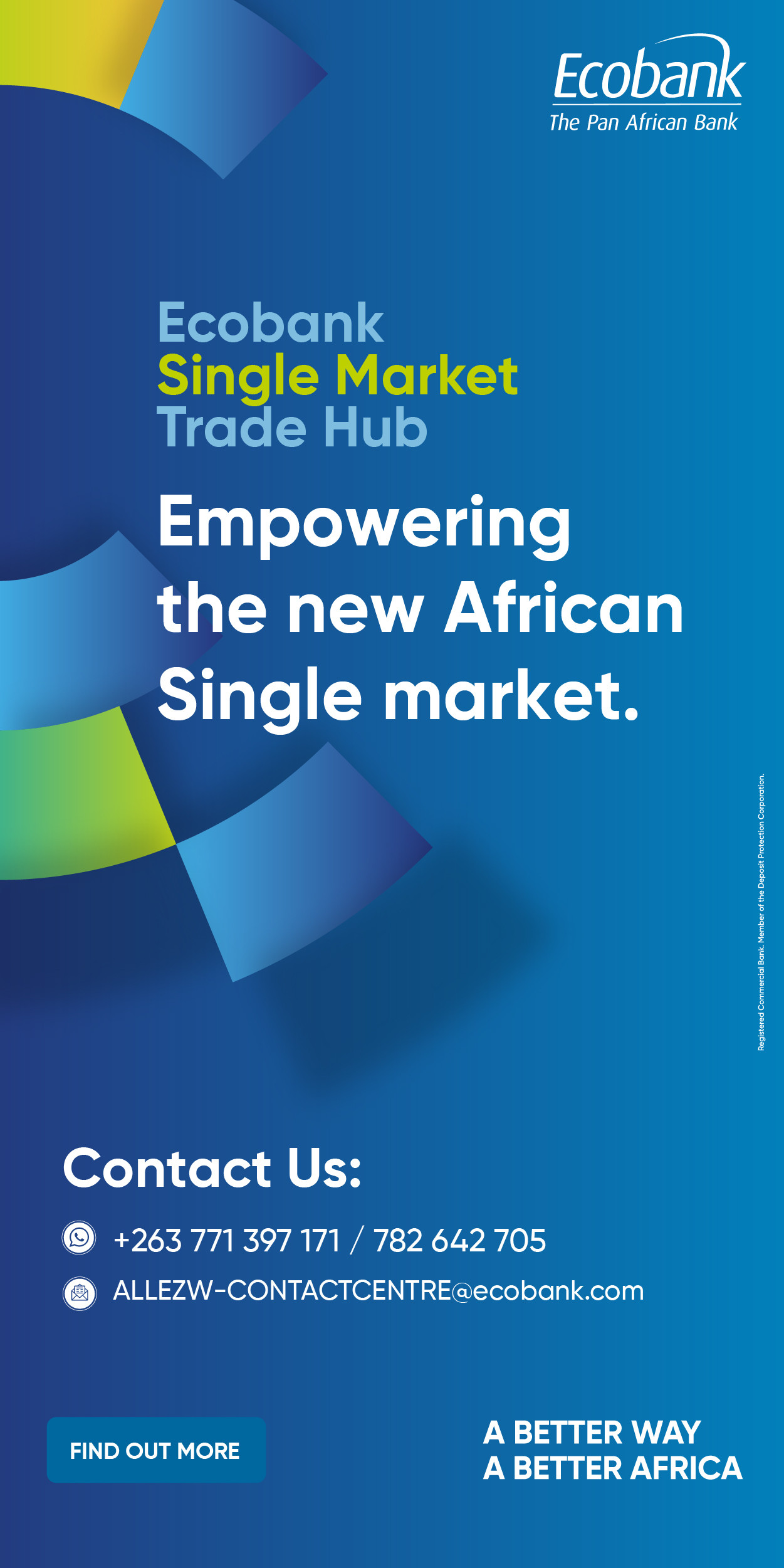- Zimbabwe is lobbying the US to reduce 18% tariffs on its exports
- The tariffs threaten Zimbabwe's metal trade, particularly platinum and ferroalloys
- Zimbabwe's bid faces US political hurdles and economic snags
- A successful tariff reduction could boost Zimbabwe's exports and economy
Harare- Zimbabwe’s Finance Minister Mthuli Ncube is leading a critical diplomatic mission in Washington to lobby for a reduction of the Trump administration’s 18% tariffs on Zimbabwean exports to the preferential 10% rate applied to select trading partners.
This effort follows President Emmerson Mnangagwa’s bold move to suspend all tariffs on U.S. goods entering Zimbabwe, signalling a desire to foster “amicable relations” amid a global trade war.
With Zimbabwe’s metal exports, notably platinum and ferroalloys, facing new risks from tariffs and global market pressures, Harare’s strategy aims to protect its fragile economy, which relies on minerals for 90% of foreign exchange.
Encouragingly, Zimbabwe should leverage this moment to pursue eligibility for the African Growth and Opportunity Act (AGOA), which offers duty-free U.S. market access and could triple its $67.8 million in exports, as seen in South Africa’s $7 billion AGOA trade in 2024.
However, the effectiveness and feasibility of Zimbabwe’s tariff gambit are constrained by its limited trade leverage, strained U.S. relations, and complex ties with China, Zimbabwe’s largest creditor and mining partner.
This analysis evaluates Zimbabwe’s approach, its potential for AGOA eligibility, and the role of its China relationship in shaping its trade strategy.
The U.S.-Zimbabwe trade relationship is modest and historically fraught, shaped by political tensions over Zimbabwe’s land reforms and human rights record. The Zimbabwe Democracy and Economic Recovery Act (ZDERA) of 2001 imposed sanctions that curtailed access to multilateral financing, isolating Zimbabwe from Western markets.
In 2024, bilateral trade totalled $111.6 million, with Zimbabwe exporting $67.8 million primarily sugar, tobacco, and ferroalloys to the U.S. and importing $43.8 million, yielding a $24.1 million surplus (though trade data from Zimstat paints a gloomy picture).
The Trump administration’s April 2025 “reciprocal tariff” policy, imposing an 18% levy on Zimbabwean goods, threatens key exports like ferroalloys ($62.7 million in 2023), already strained by global oversupply and declining platinum prices. While gold exports benefit from high global prices, the tariffs risk diverting U.S. demand to competitors like Canada or Mexico.
Zimbabwe’s proactive response, suspending U.S. import tariffs and lobbying for relief reflects economic urgency, but its success hinges on obliging U.S. political demands and its deepening economic ties with China.
Zimbabwe’s strategy combines economic concessions with diplomatic signalling, but its effectiveness is limited by its marginal trade leverage and political barriers. Representing just 0.002% of U.S. trade, Zimbabwe’s $67.8 million in exports offer little bargaining power.
The tariff suspension on $43.8 million in U.S. imports may boost American goods’ competitiveness but risks widening Zimbabwe’s trade deficit, as U.S. importers are unlikely to prioritise Zimbabwean products over tariff-exempt alternatives.
We believe that Zimbabwe's decision to remove tariffs on US goods disproportionately benefits the US, potentially straining Zimbabwe's foreign exchange reserves. Such a move would be more suitable for a level-headed leader who prioritizes bilateral trade and diplomacy, not one who believes in using economic muscle to muzzle smaller economies
The 18% tariff exacerbates pressures on ferroalloys and platinum, and even a reduction to 10% may not fully restore competitiveness, given pre-existing duties (e.g., 27% on tobacco).
Politically, Mnangagwa’s gestures, including compensating displaced white farmers, align with Trump’s concerns about Southern African agricultural policies, but U.S. sanctions tied to governance and human rights remain a hurdle.
Zimbabwe should seize this opportunity to pursue AGOA eligibility, which requires market-based reforms and human rights progress but could unlock duty-free access for its exports, significantly enhancing trade.
The Zimbabwe-China relationship adds complexity to Harare’s trade strategy, as China is Zimbabwe’s largest trading partner and creditor, with $2 billion in debt and over $1 billion in annual trade.
China dominates Zimbabwe’s mining sector, controlling 60% of lithium production and major stakes in platinum and gold through companies like Sinomine and Zijin Mining.
In 2024, Zimbabwe exported $700 million in minerals to China, dwarfing its U.S. trade, while importing $500 million in machinery and electronics, creating a trade surplus but deepening debt dependency.
China’s Belt and Road Initiative has funded infrastructure like the Hwange Power Station, but we have since warned of “debt-trap diplomacy,” as loan terms often favour Chinese firms and include resource-backed repayment clauses.
This relationship fuels U.S. skepticism, as Washington views Zimbabwe’s alignment with Beijing as a challenge to its interests in critical mineral supply chains. Zimbabwe’s tariff concessions to the U.S. may be an attempt to diversify trade partners, but its reliance on China limits its leverage and complicates AGOA eligibility, which requires alignment with U.S. foreign policy.
Feasibility of Zimbabwe’s lobbying efforts is constrained by economic fragility and political realities. With a $2 billion debt to China and limited fiscal space, suspending U.S. import tariffs typically 15.8% plus surtaxes could reduce revenue and shift trade away from SADC partners like South Africa ($1.2 billion in exports to Zimbabwe in 2023).
This risks exacerbating Zimbabwe’s trade deficit and straining reserves.
Politically, U.S. sanctions under ZDERA signal ongoing concerns about electoral integrity and human rights, particularly after the disputed 2023 elections criticized by SADC. Achieving AGOA eligibility demands reforms like ensuring free elections, strengthening judicial independence, and protecting labour rights, steps that risk domestic pushback from government hardliners.
However, Zimbabwe’s mineral wealth, including lithium and gold, offers leverage to attract U.S. investment, as proposed by equityaxis.net, aligning with Washington’s goal of countering China’s mineral dominance. The U.S.’s 90-day negotiation window provides a chance to advance these reforms, but Zimbabwe’s low priority in Washington compared to larger economies like China or the EU poses challenges.
Zimbabwe’s unilateral tariff suspension risks undermining its role as SADC chair, as members like Lesotho (50% tariffs) and South Africa (30%) explore collective responses. A coordinated SADC approach, as advocated by journalist Hopewell Chin’ono, could strengthen leverage, and Zimbabwe should align its efforts with regional goals to maximize impact.
Pursuing AGOA eligibility offers a transformative opportunity, as duty-free access could triple U.S. exports to over $200 million, drawing on Lesotho’s 300% textile export growth under AGOA. Eligibility requires market-based reforms, anti-corruption measures, and human rights progress, areas where Zimbabwe has taken steps such as liberalizing its foreign exchange market and establishing the Zimbabwe Anti-Corruption Commission but falls short due to inconsistent implementation and electoral concerns.
Engaging with U.S. platforms like USAID for technical assistance and leveraging SADC’s diplomatic weight could bridge these gaps, but reforms must be credible to satisfy U.S. reviewers.
The Zimbabwe-China relationship shapes its U.S. strategy in critical ways. While China’s investments provide economic lifelines, they tether Zimbabwe to a single partner, limiting diversification. The U.S. sees Zimbabwe’s mineral wealth as a counterweight to China’s supply chain dominance, and AGOA eligibility could attract U.S. firms to invest in lithium and platinum processing, reducing reliance on Chinese refining.
However, China’s influence raises U.S. concerns about Zimbabwe’s foreign policy alignment, a key AGOA criterion. To overcome this, Zimbabwe should propose U.S.-Zimbabwe joint ventures, as seen in South Africa’s AGOA-driven automotive sector, while maintaining economic ties with China to avoid antagonising Beijing. This balancing act is delicate, as China’s debt obligations constrain fiscal flexibility, and any pivot toward the West could trigger retaliatory measures, such as tightened loan terms.
The tariff dispute reflects broader U.S.-Zimbabwe tensions, with the U.S. prioritizing sanctions and competition with China, and Zimbabwe seeking Western re-engagement to diversify from Beijing’s orbit. Mnangagwa’s tariff suspension and farmer compensation ($3.5 billion) signal pragmatism, but without addressing governance, these may be seen as superficial.
Zimbabwe’s reliance on raw material exports and limited processing capacity amplify tariff impacts, and deepening ties with China risks perpetuating debt dependency. Encouragingly, AGOA eligibility could break this cycle by boosting processed exports and attracting U.S. investment, but it requires politically costly reforms.
Zimbabwe should diversify trade via the African Continental Free Trade Area (AfCFTA), invest in mineral processing to increase export value by 20-30%, and align with SADC for collective bargaining. With AGOA’s authorization expiring in September 2025, Zimbabwe must act swiftly to meet eligibility criteria by mid-2025.
Therefore, Zimbabwe’s tariff lobbying and U.S. import tariff suspension are bold but limited by its small trade footprint, political barriers, and China dependency. The Zimbabwe-China relationship, while economically vital, complicates U.S. engagement and AGOA eligibility, as Beijing’s influence raises foreign policy concerns.
Pursuing AGOA offers a path to triple exports and diversify trade, but demands reforms in governance, human rights, and anti-corruption steps that clash with domestic political realities. By leveraging its mineral wealth, aligning with SADC, and balancing China and U.S. interests, Zimbabwe can enhance its strategy’s feasibility. Without these efforts, it risks remaining vulnerable to tariffs and geopolitical rivalries.
Equity Axis News





